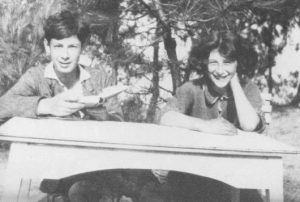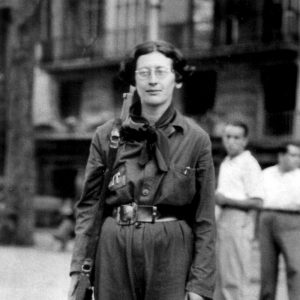
Simone Weil (1909-1943) was a French philosopher, also known for her political activism. In her philosophy she dealt with science, religion and mysticism. In some of her books (Gravity and Grace or The Need for Roots, for example) she concluded, more or less explicitly, that the aim of science is the study of the beauty of the universe. Thus, in the paragraph entitled Beauty in Gravity and Grace, she wrote: “Object of science: the beautiful (i.e. order, proportion, harmony) in what is suprasensible and necessary”.
In the same book there is a paragraph entitled Algebra. This is not strange, because Simone was the younger sister of André Weil (1906-1998), the famous French mathematician, one of the founders of the Bourbaki group (there is an interesting book on the Weil family [2], written by Sylvie Weil, André’s daughter and Simone’s niece).
It is perhaps in The Need for Roots that Simone Weil most precisely formulated her definition of science: “The spirit of truth can reside in science on condition that the motive of the scholar is love for the object that is the subject of his study. That object is the universe in which we live. What is there to love in it, other than its beauty?”. And she concluded:
The proper definition of science is that it is the study of the beauty of the world.

Both Simone and André had a strong relationship with Spain. Simone fought on the side of the Republic in the Spanish Civil War, joining Buenaventura Durruti’s anarchist column. André visited Spain in 1934 and in the spring of 1936, visits which, according to his autobiography [1], were among the trips that most impressed him (André was very interested in Ortega, but not the philosopher Ortega y Gasset but the bullfighter Domingo Ortega, whom he saw bullfighting: ‘In my ignorance,’ he wrote in his autobiography, ‘I appreciated that bullfight’).
References
[1] André Weil, Souvenirs d’apprentissage, Birkhäuser, Basilea, 1991 (there is an English version: The apprenticeship of a Mathematician, also published by Birkhäuser, and, as Julio Zárate pointed out to me, also Spanish: Memorias de aprendizaje, Nivola, 2002).
[2] Sylvie Weil, Chez les Weil: André et Simone, Buchet Chastel, 2009 (there is an English version: At home with André and Simone Weil, Nortwestern University Press, 2010).
[3] Simone Weil, La gravedad y la gracia, Editorial Trotta, Valladolid, 2014.
[4] Simone Weil, Echar raíces, Editorial Trotta, Valladolid, 1994

El libro citado en 1º lugar está traducido y publicado en español en 2002: Memorias de aprendizaje, de editorial Nivola, colección Ciencia Abierta número 6.